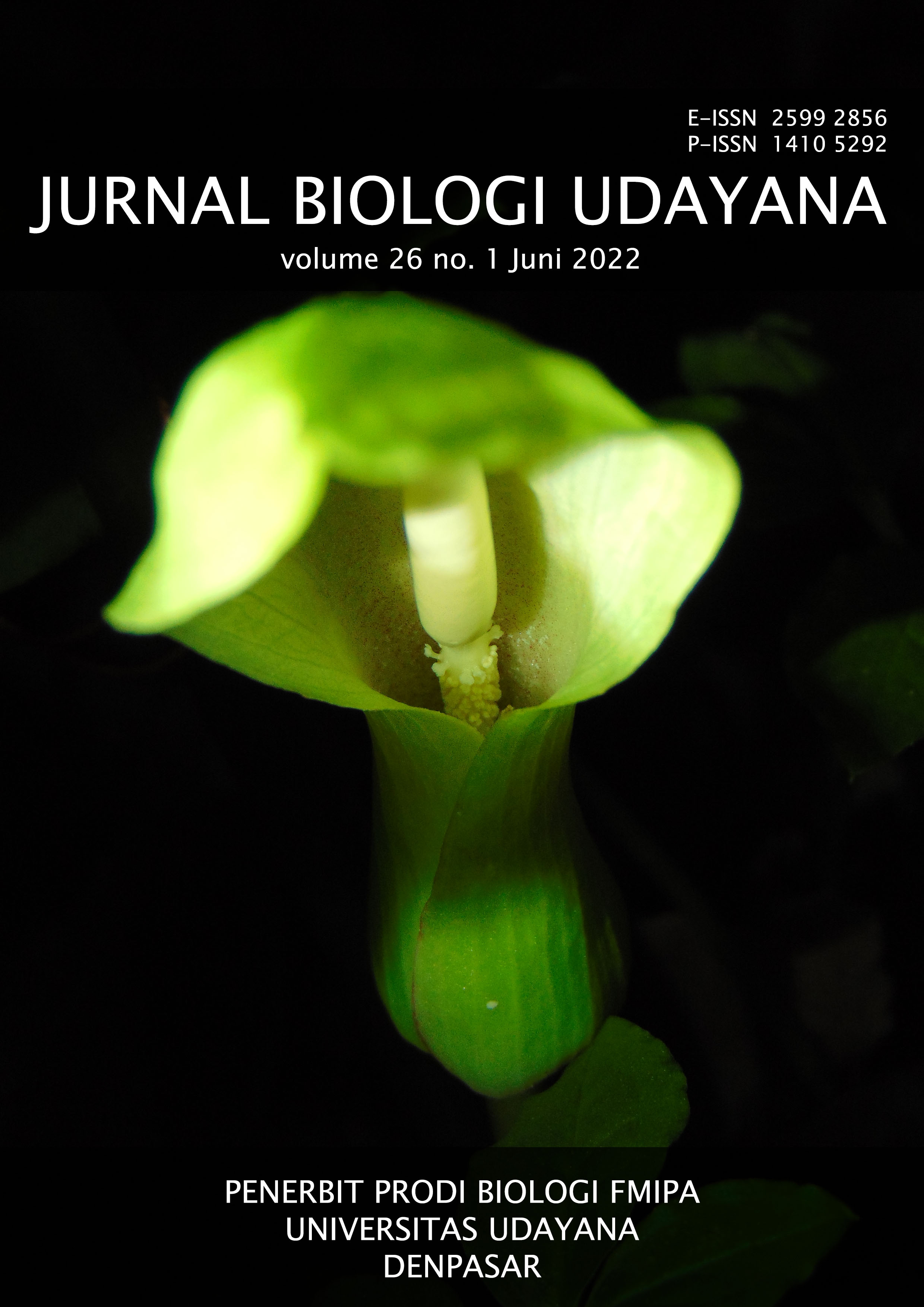Potensi bakteri indigen Indonesia dalam mendegradasi karbofuran
Abstract
Pestisida memegang peranan penting dalam membunuh hama, baik serangga, jamur maupun gulma. Penggunaan pestisida berbahan dasar aktif di lingkungan dapat menimbulkan kemungkinan terjadinya pencemaran. Penggunaan karbofuran dapat mengakibatkan pencemaran pada tanah, perairan, udara, dan juga kehidupan liar. Bioremediasi menjadi solusi yang tepat untuk mengatasi masalah pencemaran lingkungan akibat penggunaan pestisida. Bioremediasi dapat dilakukan dengan memanfaatkan isolat bakteri indigen Indonesia. Penelitian ini bertujuan untuk mendapatkan informasi tentang pertumbuhan optimal isolat bakteri resisten karbofuran, pengaruh penambahan berbagai konsentrasi karbofuran terhadap pertumbuhan isolat bakteri, serta kemampuannya dalam mendegradasi karbofuran. Bakteri indigen yang diteliti adalah isolat bakteri resisten karbofuran koleksi Pusat Teknologi Lingkungan (PTL). Pertumbuhan bakteri diukur menggunakan spektrofotometer panjang gelombang 600 nm. Konsentrasi karbofuran yang digunakan adalah 100, 500, dan 1000 ppm. Kemampuan degradasi karbofuran diukur menggunakan High Performance Liquid Chromatography (HPLC). Hasil penelitian menunjukkan bahwa penambahan berbagai konsentrasi karbofuran mempengaruhi pertumbuhan isolat bakteri dengan cara menurunkan densitas sel. Pertumbuhan isolat R2, BN5.2 dan BN5.3 paling baik pada medium yang mengandung 500 ppm karbofuran sedangkan pertumbuhan isolat R1, R3.2, R3.3, BN2.3, BN5.1 dan C paling baik pada medium yang mengandung 1000 ppm. Isolat bakteri R2 dan R3.3 masing-masing dapat mendegradasi karbofuran sebesar 68,47% dan 66,68% selama tiga hari.
Downloads
References
Chanif I, Djauhari S, Aini LQ. 2015. Uji potensi jamur pelapuk putih dalam bioremediasi insektisida karbofuran. Jurnal HPT 3(2), 84–90.
Devi KY, Iyer P. 2017. Isolation & characterization of carbofuran pesticide degrading microorganisms from various field areas in tamil nadu. Research Journal of Life Sciences, Bioinformatics, Pharmaceutical and Chemical Sciences 2(270), 270–281.
Hapsari RT, Salma S, Widajati E, Sari M. 2016. Peranan methylobacterium spp. dalam meningkatkan dan mempertahankan vigor benih kedelai. Iptek Tanaman Pangan 11(1), 57–66.
Indraningsih. 2008. Pengaruh penggunaan insektisida karbamat terhadap. J. Wartazoa 18(2), 101–114.
Kim JH, Kim J, Cha ES, Ko Y, Kim DH, Lee WJ. 2013. Work-related risk factors by severity for acute pesticide poisoning among male farmers in South Korea. International Journal of Environmental Research and Public Health 10(3), 1100–1112. https://doi.org/10.3390/
Kinasih I, Kusumorini A, Komarudin A. 2014. Pengaruh tiga jenis insektisida karbamat terhadap kematian dan bobot tubuh cacing Eisenia fetida. Jurnal Istek 8(1), 159–181.
Luqman EM., Widjiati W, Yustinasari LR. 2018. Brain cells death on infant mice (Mus musculus) caused by carbofuran exposure during the lactation period. Kafkas Universitesi Veteriner Fakultesi Dergisi 24(6), 845–852. https://doi.org/10.9775/kvfd.2018.20045
Maisaroh M, Susetyo IB, Rusmandana B. 2016. Sintesis asam 9,10-dihidroksi stearat (Dhsa) melalui hidrolisa epoksida dari oksidasi asam oleat dengan asam performat. Reaktor 16(2), 57. https://doi.org/10.14710/reaktor.16.2.57-64.
Sandhya Mishra, Wenping Zhang, Ziqiu Lin, Shimei Pang, Yaohua Huang, Pankaj Bhatt, Shaohua Chen. 2020. Carbofuran toxicity and its microbial degradation in contaminated environments. Chemosphere 259, 127419. https://doi.org/10.1016/j.chemosphere.2020.127419
Pambudi A, Noriko N, Sari EP. 2017. Isolasi dan karakterisasi bakteri tanah sawah di Kecamatan Medan Satria dan Bekasi Utara, Kota Bekasi, Jawa Barat. Jurnal Al-Azhar Indonesia Seri Sains dan Teknologi 3(4), 187. https://doi.org/10.36722/sst.v3i4.233
Puspitasari DJ, Khaeruddin. 2016. Kajian bioremediasi pada tanah tercemar pestisida. Jurnal Kovalen 2(3), 98–106.
Setiawati W, Jayanti H, Hudayya A, Hasyim A. 2015. Pengaruh insektisida karbofuran terhadap kerusakan dan kehilangan hasil kentang akibat serangan Gryllotalpa hirsuta Burmeister (Ortoptera: Gryllotalpidae) serta dampaknya terhadap keanekaragaman Artropoda tanah. J. Hort 25(1), 54–62.
Suciati F, Anwar S, Dadang, Aviantara DB, Widyastuti R. 2016. Pengaruh pemberian pestisida terhadap transformasi asam fenolat serta produksi Co2 dan Ch4 pada tanah gambut. Jurnal Tanah dan Iklim 40(1), 11–23. https://doi.org/10.21082/jti.v40n1.2016.11-23





